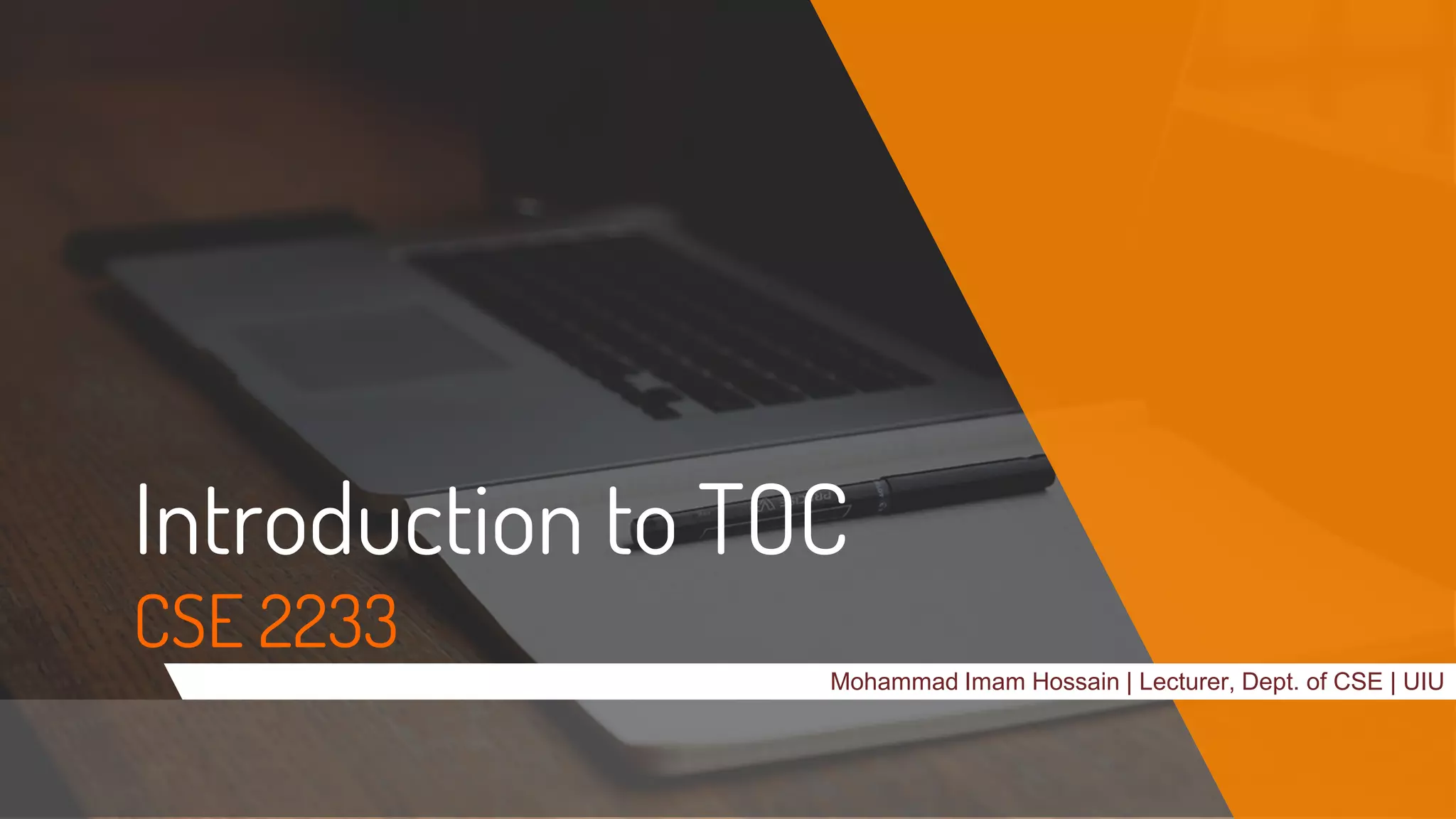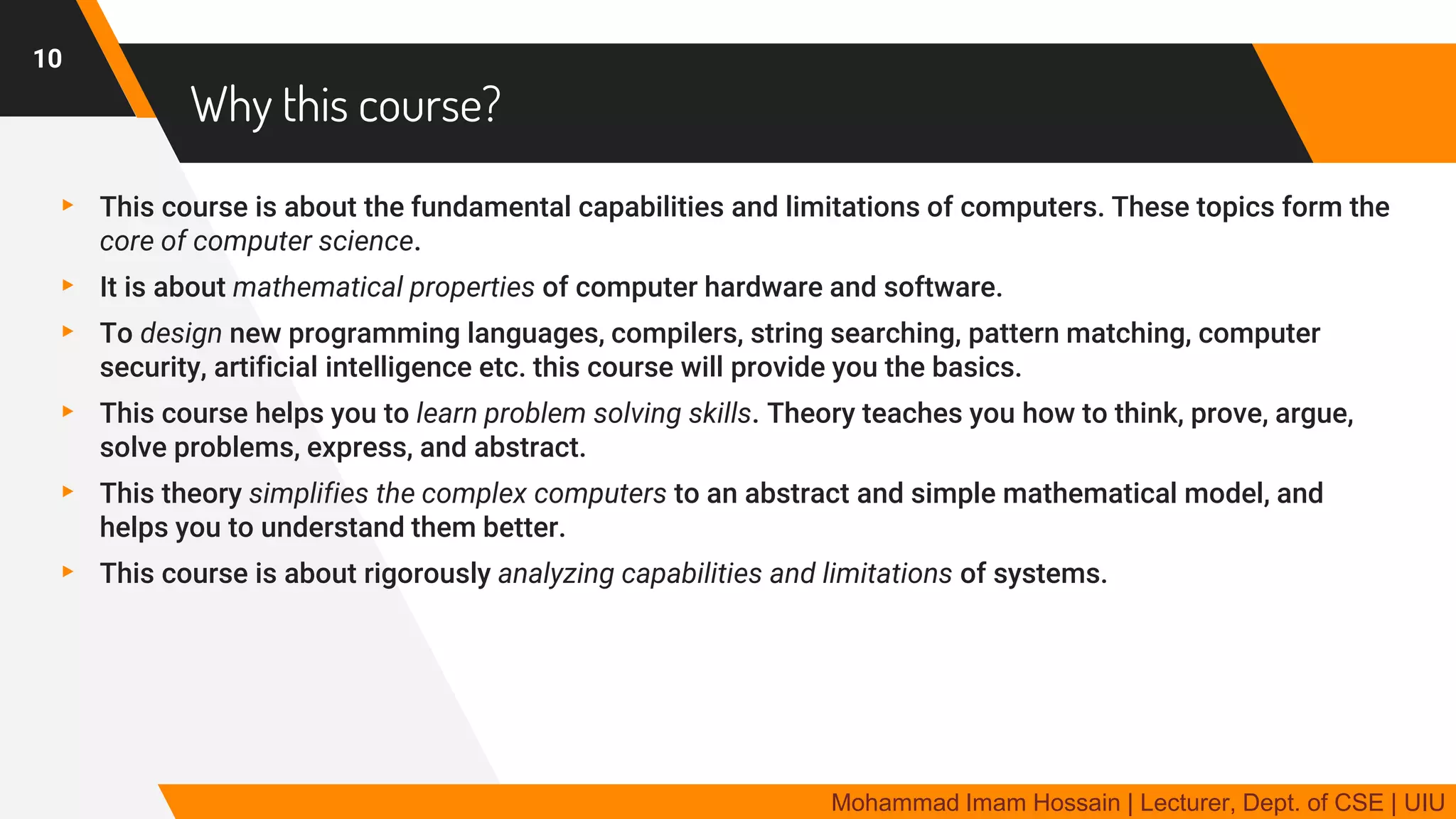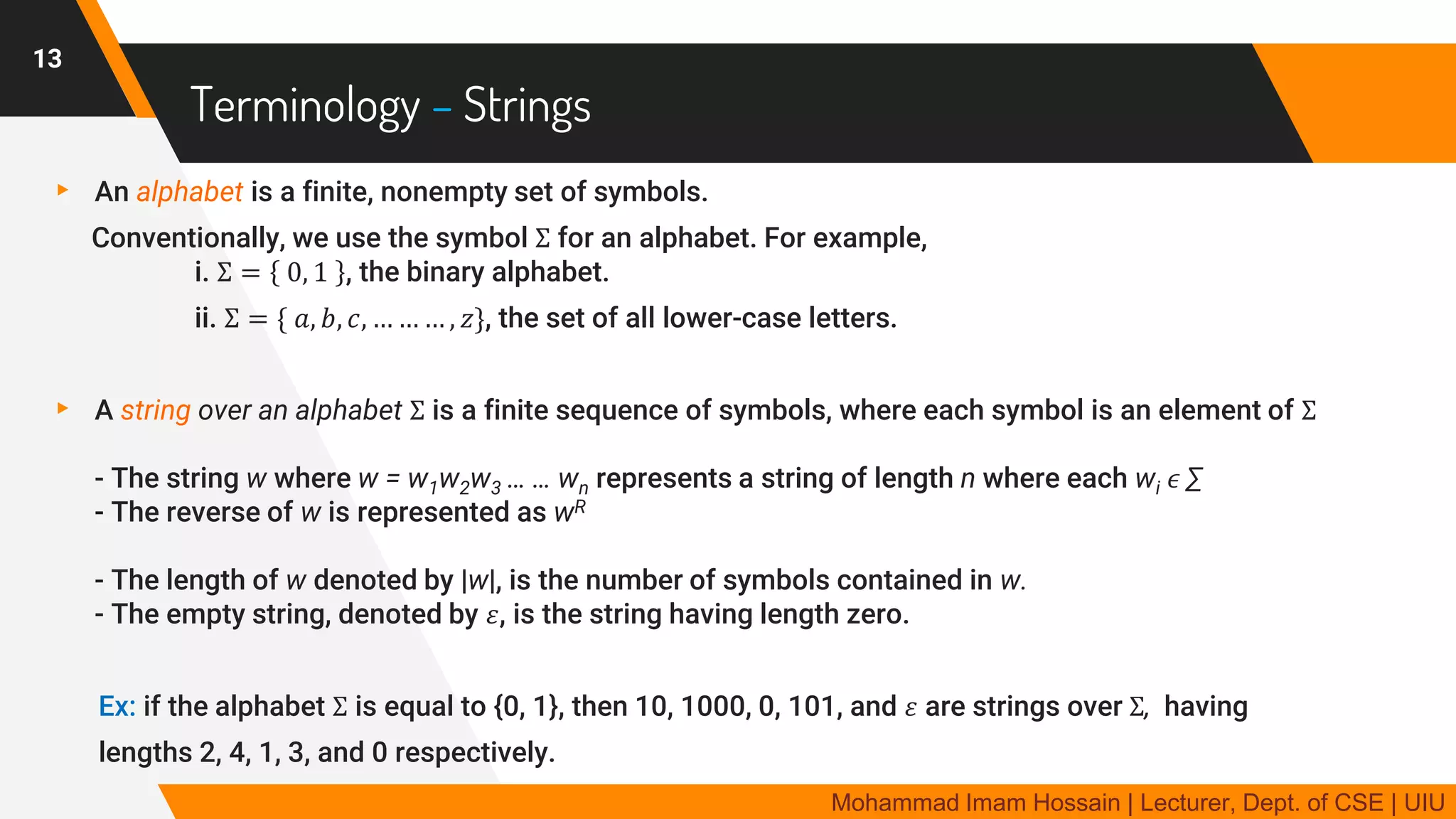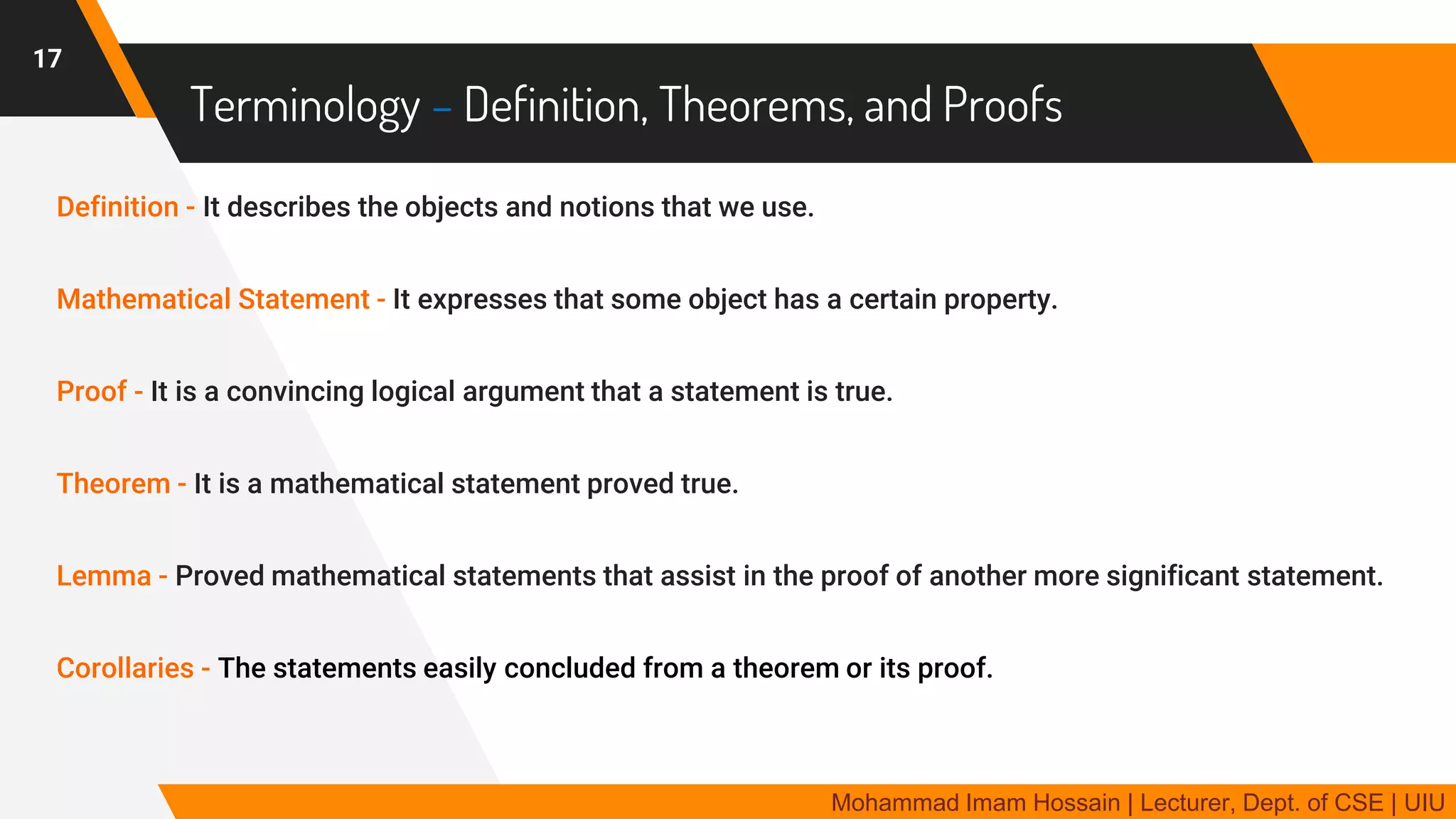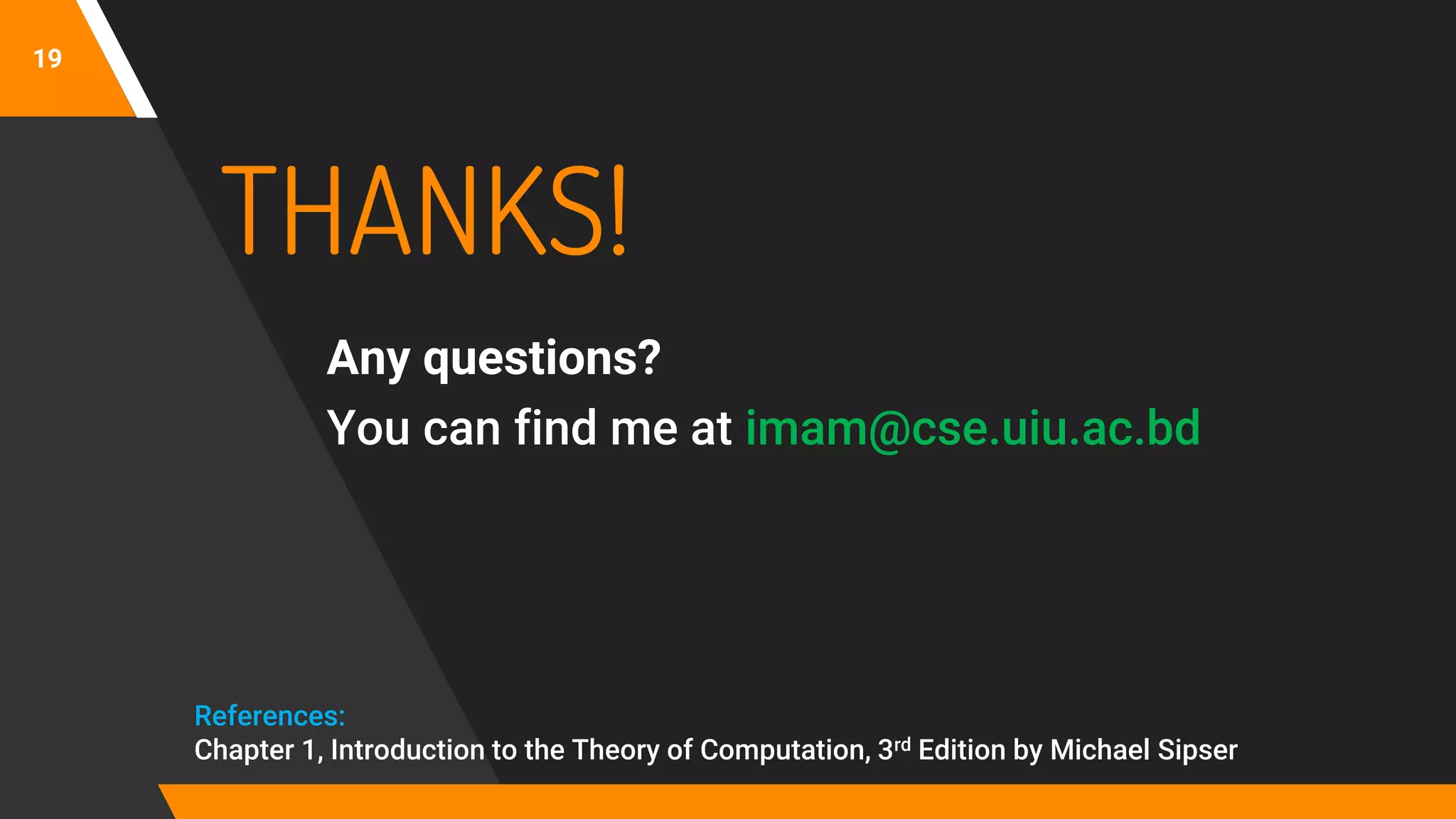The document introduces the Theory of Computation (TOC), covering its purpose to understand the capabilities and limitations of computers through mathematical models. It highlights three central areas of TOC: complexity theory, computability theory, and automata theory, each addressing fundamental problems in computation. Additionally, the document underscores the historical development of TOC and its importance in shaping modern computer science.
